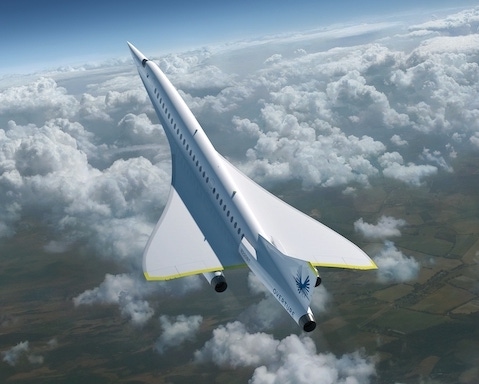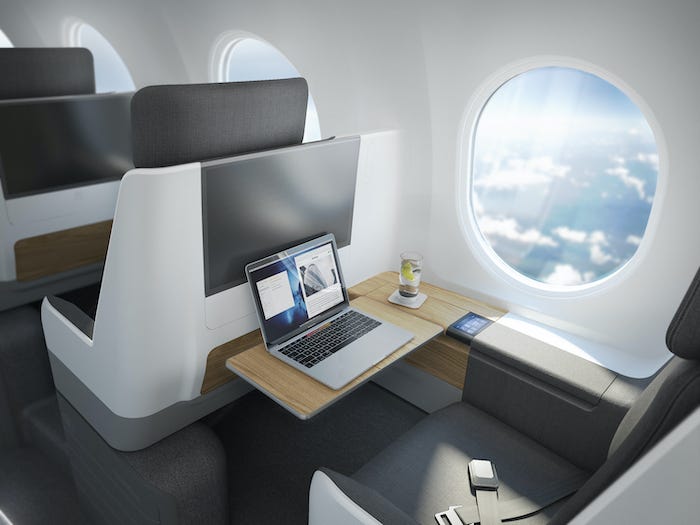Supersonic Flight is Back
The 1970s Concord supersonic transport has been re-imaged by Boom Technology with an eye for the modern business traveler.
July 15, 2020

The supersonic phoenix is rising again. The latest incarnation of faster-than-sound flight for the commercial market is being created by Boom Supersonic, the aerospace startup company. Boom recently announced that its supersonic demonstrator, XB-1, will roll out on October 7, 2020. XB-1 is an independently developed supersonic jet and that will demonstrate key technologies for Overture, Boom’s commercial airliner, such as advanced carbon fiber composite construction, computer-optimized high-efficiency aerodynamics, and an efficient supersonic propulsion system.
Boom Technology’s co-founder and then VP of Technology, Joshua Krall, was a keynote speaker at Dassault Systemes’s annual 3DExperience Forum in 2019.
“Our goal is to make high-speed travel available to everyone – not just the thrill seekers or rich travelers,” explained Krall at the forum. “It not so much about time saved but about life gained back from faster air travel.”
For all but the wealthiest travelers, the promise of a supersonic adventure never arrived. The last supersonic aircrafty was the British-French turbojet powered Concorde which operated from 1974 until 2003. It had a maximum speed over twice the speed of sound, at Mach 2.04 (1,354 mph or 2,180 km/h at cruise altitude). Most of today’s commercial jet aircraft reach around 400 – 500 knots (460 – 575 mph) or roughly 0.6 mach. The mach number is simply a percentage of the speed of sound. At sea level with an air temperature of 15 degrees Celsius, the speed of sound is 761 mph.
There are zero scientific barriers to supersonic flights, said Krall. However, there are cost barriers. Boom hopes to bring the reduce the cost barrier for supersonic flight. It plans to do so with Overture, the first Boom aircraft for commercial use. Overture will travel at mach 2.2 or approximately 2.6 times faster than existing commercial jet aircraft. It will cruise at 60K feet, about twice as high as commercial aircraft.
|
Boom passenger space. (Image Source: Boom Passenger Space) |
While the Overture’s technical performance against non-supersonic flight is impressive, the Overture will have one main difference from the historic Concord supersonic transport – luxury. The original Concord catered to luxury travel. But the world has changed significantly in the last 50 years. Today’s business travelers are focused on productivity (and perhaps a bit of sleep) during their air travel. Their goal is to reach their destination sooner, not in ostentation luxury.
Boom has pre-orders from Japan Airlines and Virgin Group representing $6B in potential sales. XB-1 is Boom’s demonstrator aircraft designed to prove key technologies for safe, efficient and sustainable supersonic travel. XB-1 will begin flight tests in the Mojave Desert’s supersonic corridor in 2021.
Based in Denver, Boom’s world-class team of more than 130 full-time employees have collectively contributed to more than 40 new air and space vehicles, including the Falcon 9, Virgin SpaceShipTwo, and the Joint Strike Fighter.
Whereas the original Concord was designed with drafting tables and slide rules, today’s XB-1 demonstrator relied on Dassault Systemes Solidworks for CAD, Simulia for simulation the 3DExperience platform to support product development from concept through manufacturing and certification.
Those interested in seeing the Boom supersonic demonstrator, XB-1, rolls out this October should RSVP.
|
XB-1 under construction. (Image Source: Boom XB1 Hangar) |
About the Author(s)
You May Also Like







